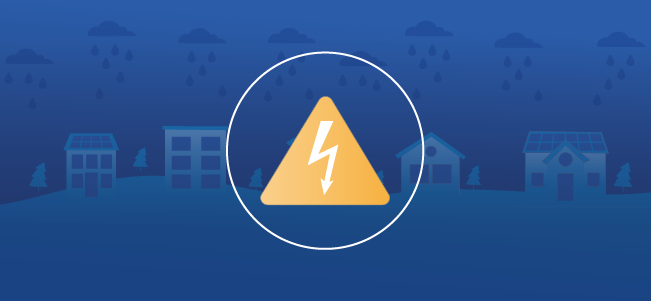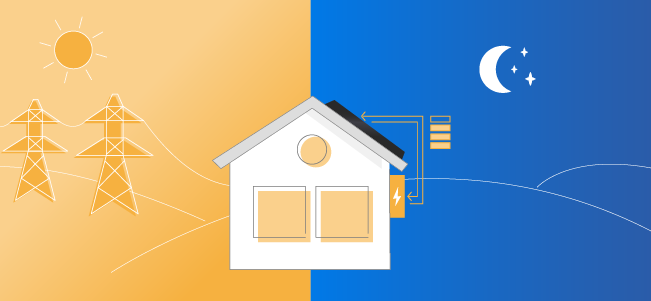Are you a good fit for energy storage?
It’s pretty easy to imagine what an ideal home for solar looks like–with millions of residential solar panel systems already installed in the US, you likely can picture a home with solar panels in your mind. However, it can be much harder to picture what an ideal fit for storage looks like: most batteries are installed in garages or on the side of buildings, making it hard to visualize which homes are a good fit for storage.
With that in mind, here are four questions to help you figure out whether energy storage is a good fit for you and your home.

#1. Do you experience frequent electricity outages?
The primary reason most homeowners install energy storage is for emergency backup power in the event of an outage. While the electricity grid is very resilient overall, there are a few parts of the country where long outages happen with some frequency. On the West coast, many Californians have experienced blackouts over the last few years either directly as a result of wildfires or in an effort to reduce the likelihood of fires through public safety power shutoff (PSPS) events. In the Southeast, hurricane season regularly brings outages for millions of homeowners from Florida through the Carolinas. In the Northeast, outages are frequently a result of ice storms and the occasional north-turning hurricanes.

If you experience outages with any sort of regularity, pairing solar and storage is an ideal way to ensure that you’ll have backup power even when the rest of the grid is down. So long as the sun is shining, you can fill your battery and use it to power parts of your home basically indefinitely, keeping your lights on even when the rest of your block is in the dark.
#2. Are you on a time of use electricity rate?
In some parts of the country, solar customers and residential electricity users are placed on time of use rates (TOU). TOU electricity rates are a type of time-varying rate, where the price you pay for electricity changes by season, month, day of the week, or even by the hour of the day.
Most TOU rates now increase the price of electricity during the early evening (i.e., from 4 to 6 pm, or from 5 to 8 pm), when your solar panels are no longer producing electricity at their peak levels. This means that even if you’re offsetting more electricity than you use with solar, you could still have high monthly electricity bills even after installing solar; if you’re putting solar power onto the grid when the price of electricity is low (during the day) and pulling from the grid when the price of electricity has increased (in the evening after the sun has gone down), then there’s a mismatch between the rate at which you’re compensated for solar electricity and the price you’re paying for electricity from the grid.

A battery can help to improve the economics of your solar panel system by allowing you to charge your battery during the day when your panels are producing more electricity than you need and the price of electricity is low. Then, when the price of electricity increases and your solar production decreases in the evening, you can pull directly from your battery instead of from the grid to avoid the higher electricity rate.
#3. Does your bill include demand charges?
Although uncommon for residential electricity users, demand charges are increasingly common for commercial and industrial electricity users and can account for half or more of your monthly electricity costs.
Instead of charging you based on the total amount of electricity that you use (expressed in kilowatt-hours, or kWh), demand charges bill you based on your peak power usage (expressed in kilowatts, or kW) during a single fifteen-minute or hour-long period during the month. (Note: your electricity usage, or consumption, is the amount of power you draw from the grid multiplied by the amount of time you’re using electricity, meaning it’s measured in kilowatt-hours – power x time.)

Since a demand charge focuses only on your peak power consumption during a short time period, if you use 100 kilowatts of power for fifteen minutes every morning when powering up your business, for instance, but use only 50 kW or less throughout the rest of the day, you’ll be charged for the whole month based on that peak 100 kW value, as opposed to your average power demand.
Energy storage can help reduce your demand charges by allowing you to pull from your battery instead of the grid at times of peak demand, reducing your peak demand for the month to help reduce the rate you’re charged for your demand.

